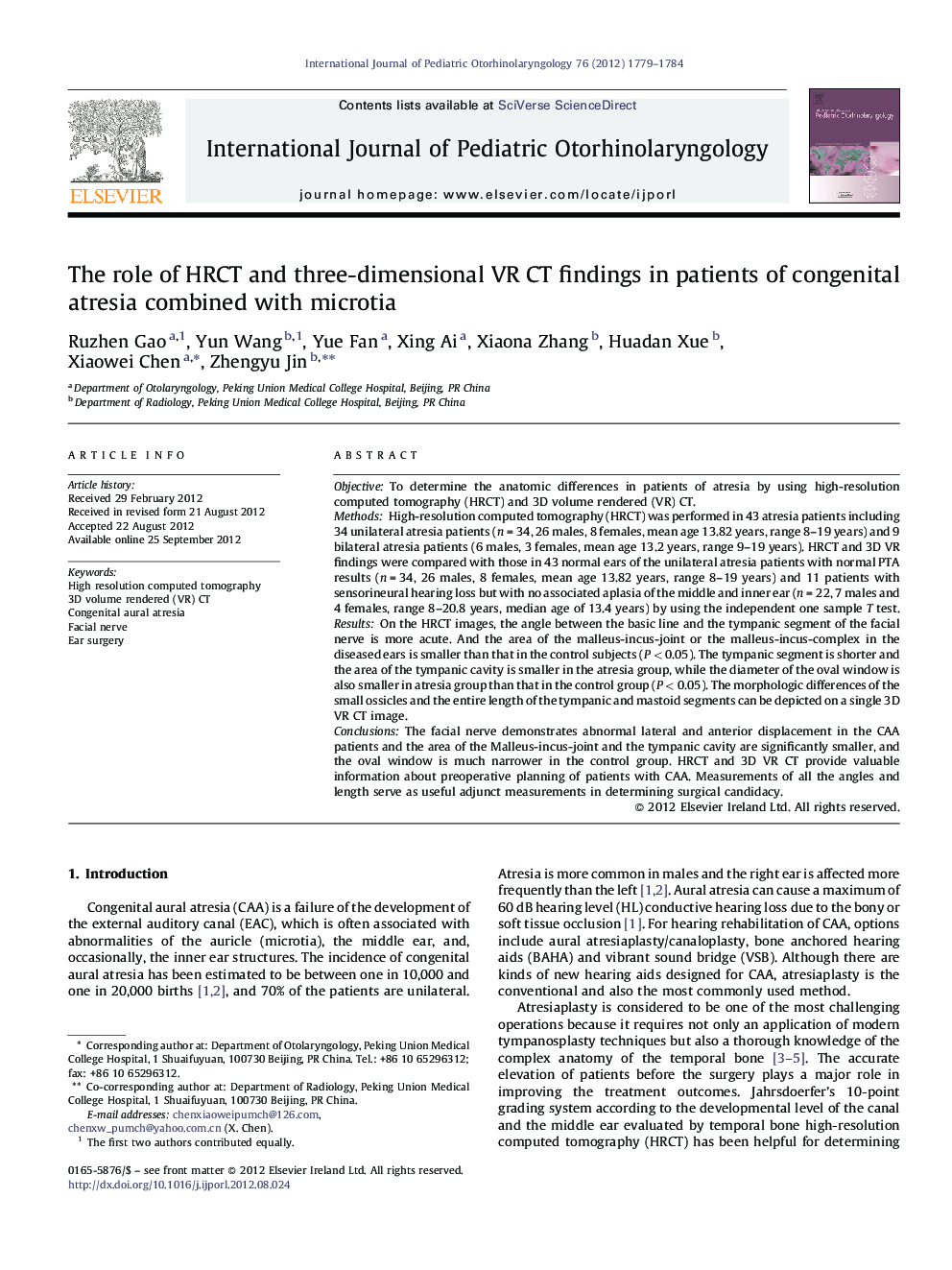| Article ID | Journal | Published Year | Pages | File Type |
|---|---|---|---|---|
| 4113269 | International Journal of Pediatric Otorhinolaryngology | 2012 | 6 Pages |
ObjectiveTo determine the anatomic differences in patients of atresia by using high-resolution computed tomography (HRCT) and 3D volume rendered (VR) CT.MethodsHigh-resolution computed tomography (HRCT) was performed in 43 atresia patients including 34 unilateral atresia patients (n = 34, 26 males, 8 females, mean age 13.82 years, range 8–19 years) and 9 bilateral atresia patients (6 males, 3 females, mean age 13.2 years, range 9–19 years). HRCT and 3D VR findings were compared with those in 43 normal ears of the unilateral atresia patients with normal PTA results (n = 34, 26 males, 8 females, mean age 13.82 years, range 8–19 years) and 11 patients with sensorineural hearing loss but with no associated aplasia of the middle and inner ear (n = 22, 7 males and 4 females, range 8–20.8 years, median age of 13.4 years) by using the independent one sample T test.ResultsOn the HRCT images, the angle between the basic line and the tympanic segment of the facial nerve is more acute. And the area of the malleus-incus-joint or the malleus-incus-complex in the diseased ears is smaller than that in the control subjects (P < 0.05). The tympanic segment is shorter and the area of the tympanic cavity is smaller in the atresia group, while the diameter of the oval window is also smaller in atresia group than that in the control group (P < 0.05). The morphologic differences of the small ossicles and the entire length of the tympanic and mastoid segments can be depicted on a single 3D VR CT image.ConclusionsThe facial nerve demonstrates abnormal lateral and anterior displacement in the CAA patients and the area of the Malleus-incus-joint and the tympanic cavity are significantly smaller, and the oval window is much narrower in the control group. HRCT and 3D VR CT provide valuable information about preoperative planning of patients with CAA. Measurements of all the angles and length serve as useful adjunct measurements in determining surgical candidacy.
